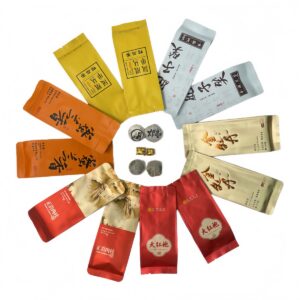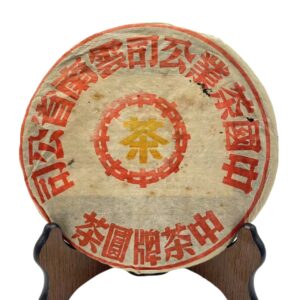Imagine the moment you lift a porcelain gaiwan to your lips, steam swirling with garden-fresh orchids and toasted chestnut. As that first golden sip glides across your tongue, you feel an awakening—your senses sharpen, your spirit steadies, and the world slows down. Brewing oolong tea properly is more than a morning routine; it’s a sensory ceremony that honors centuries of tea culture and unlocks the full potential of every leaf.
In this guide, you’ll learn how to brew oolong tea properly using gongfu precision and Western simplicity, discover advanced cold-brew techniques, hone your palate with aroma and mouthfeel secrets, and avoid common pitfalls. Let’s transform your tea moments into rituals of beauty, balance, and bliss.
Understanding Oolong Tea Basics
Oolong tea occupies the space between green and black teas, uniquely defined by its partial oxidation (10–70%). Key varieties include:
- Tieguanyin: Floral, buttery, hints of orchid.
- Da Hong Pao (Wuyi Rock Tea): Rich mineral notes, roasted depth.
- High-Mountain Oolong (Taiwan): Bright, creamy, fruit-forward.
Each style’s oxidation and firing levels sculpt its flavor—from light, floral bursts to deep, toasty warmth.

Essential Teaware & Water Quality
Choosing Your Vessel
- Gaiwan: Excellent for delicate control and multiple infusions.
- Yixing Clay Teapot: Breathable clay accentuates roasted oolong nuance.
- Glass Teapot or French Press: Great for Western-style clarity and easy cleaning.
Water Matters
- Temperature: 95–100 °C . Too hot scorches leaves, too cool mutes aroma.
- Quality: Use filtered or spring water with moderate mineral content to highlight natural sweetness.
Step-by-Step Gongfu Brewing Method
- Measure & Rinse
- Use 5–7 g of leaves per 120 ml water.
- Rinse with hot water for 5 s, then discard to awaken the leaves.
- Controlled Infusions
- First Steep: 8–10 s. The liquor will glimmer pale gold, releasing top floral notes.
- Subsequent Steeps: Add 2–5 s each round. Enjoy 8–12 infusions, noting evolving flavors from orchid to honey to roast.
- Savor Sensory Details
- Color: Watch it shift from lemon-gold to amber.
- Aroma: Inhale steam—floral, stone fruit, or warm grain.
- Mouthfeel: A smooth, velvety coat that softly energizes.

Western-Style Brewing for Everyday Enjoyment
For busy mornings, a simplified approach still yields elegance:
- Leaf & Water Ratio
- 2 g leaves per 200 ml water in a teapot or infuser.
- Steep Time
- 3–5 minutes at 90–95 °C.
- Shorter steeps highlight light florals; longer steeps deepen roasted or honeyed tones.
- Single Infusion
- Perfect for a quick cup. Pour, steep, and sip—ideal for work-from-home pauses or casual gatherings.
Advanced Techniques: Cold Brew & Iced Oolong
Cold Brew
- Ratio: 10 g leaves per 500 ml cold water.
- Steep: Refrigerate 8–12 hours.
- Result: Smooth, low-tannin tea with crisp floral sweetness—refreshing on hot afternoons.
Iced Oolong
- Brew Western-style at double strength.
- Cool slightly, then pour over ice.
- Garnish with mint or citrus for an invigorating twist.
🔗 To learn more about how to make tea, check out Tbiwencha’s YouTube video explaining how to make tea.
Sensing Flavor: Aroma, Color & Mouthfeel
Observing Liquor Color & Clarity
A pristine cup reveals leaf craftsmanship: crystal clear, with hues from pale honey to deep amber.
Inhaling Aroma
- Floral: Jasmine, orchid, gardenia.
- Fruity: Peach, citrus, lychee.
- Roasty: Caramel, chestnut, cocoa nibs.
Close your eyes, breathe deeply, and let each note transport you.
Tasting: Sweetness, Complexity & Finish
- Sweetness: Natural honeyed or fruity sugars.
- Complexity: Layered transitions from bright to mellow.
- Finish: Lingering qiwei—an uplifting aftertaste that invigorates.
Common Mistakes & Troubleshooting
- Water Too Hot → Bitterness and loss of subtle aroma. Fix: Let boiled water cool for 1–2 minutes.
- Water Too Cool → Flat or under-extracted tea. Fix: Raise temperature closer to 95 °C.
- Incorrect Leaf Dosage → Weak or overpowering. Fix: Adjust by 0.5 g increments.
- Ignoring Leaf Quality → No method can mask stale leaves. Always use fresh, whole-leaf oolong.
Pairing & Serving Recommendations
Food Pairings
- Light Oolong: Dim sum, fruit tarts, yogurt parfait.
- Roasted Oolong: Grilled meats, aged cheese, dark chocolate.
Serving Styles
- Gongfu Ceremony: Small teapot/gaiwan, multiple steeps, shared among friends.
- Casual Sipping: Teapot or mug for solo enjoyment or workplace breaks.
FAQ: Oolong Tea Brewing Questions
- Can I reuse leaves for multiple steeps? Absolutely—quality oolong thrives across 8–12 infusions.
- How long can I store brewed oolong? Best consumed immediately; refrigerate leftover cold brew up to 24 hours.
- What’s the best oolong variety to start with? Tieguanyin for florals, Da Hong Pao for a roasted introduction.
Conclusion & Next Steps
Mastering how to brew oolong tea properly transforms everyday tea drinking into an artful ritual. By selecting fresh leaves, controlling water temperature, and practicing both gongfu and Western methods, you unlock oolong tea’s full sensory and wellness potential. Begin your exploration—experiment with floral Tieguanyin and mineral-rich Da Hong Pao, savor each nuance, and let the centuries-old tradition of oolong gifting calm, clarity, and joy to your day.



